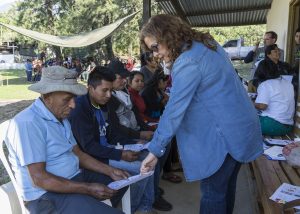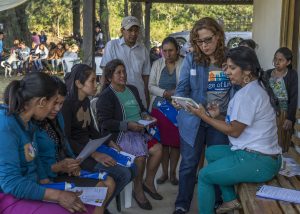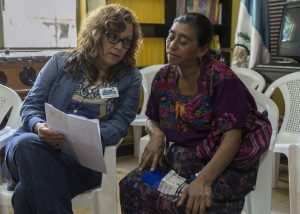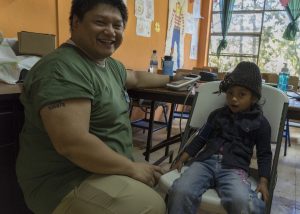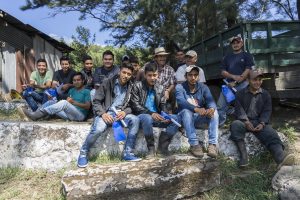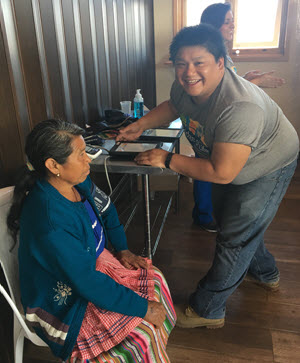Bridge of Life Up Close
How Providing Nutrition Education in Uganda Fed My Soul
I am living my life to the fullest! Bridge of Life (BOL) gave me the opportunity to learn, to serve and to grow spiritually during my recent volunteer experience on their chronic disease prevention mission in Uganda in March 2019.
Having access to health care is a right for everyone, especially for those with chronic illnesses. Many of the Ugandans we met had no access to health care due to the rural locations they live in and their financial situations. Many also reported not being able to afford necessary medicine. Our goal was to reach out to as many people as possible and to provide every individual with free chronic disease screening and prevention education.
 Each patient we met had a story to tell, but one patient’s story in particular touched me deeply.
Each patient we met had a story to tell, but one patient’s story in particular touched me deeply.
In a small village located near Lake Bunyonyi, we met a young man with type 1 diabetes and severe calorie/protein malnutrition. His fat and muscle depletion were clearly visible. He had traveled a very long distance by boat and came to us with the hope that we could help with his condition.
His story was hard to hear, let alone to live. He fully depended on insulin to survive, which required him to check his blood glucose daily. He had a glucometer at home but no strips to check his blood sugar. His daily calorie intake was estimated around 400 to a maximum of 600 kcal (the average for a male is 2,500 kcal!), and his only source of protein was half a cup of beans per day. He could not afford eggs or fruits and vegetables. For those of us in the dietetic field, we certainly understood the severity of his condition.
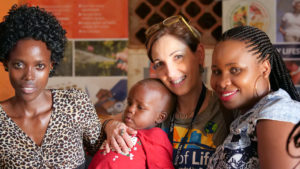 With the help of a local translator, we were able to educate him on the signs and symptoms of high and low blood sugar levels. The translator happened to have connections to local health care facilities and offered to refer him to a clinic in a nearby town. I felt so happy and fulfilled knowing that he was not returning to his village empty-handed! We were able to return the hope that he came to us with. And I now remind myself every day that this patient’s story could easily be MY, or anyone else’s, story.
With the help of a local translator, we were able to educate him on the signs and symptoms of high and low blood sugar levels. The translator happened to have connections to local health care facilities and offered to refer him to a clinic in a nearby town. I felt so happy and fulfilled knowing that he was not returning to his village empty-handed! We were able to return the hope that he came to us with. And I now remind myself every day that this patient’s story could easily be MY, or anyone else’s, story.
This quote from Lilla Watson, an indigenous Australian, was presented to our team on day one of our mission, and it rang very true by the final day of the trip: “If you have come here to help me, you are wasting your time, but if you have come because your liberation is bound up with mine, then let us work together.”
I know we touched many people’s lives on this mission. But what is even truer is how much the Ugandan people impacted the core and souls of OUR beings. I hope that my story touches YOU to the core. And if it does, I encourage you to get involved, to get out of your comfort zone and to join BOL in serving humanity!
Humanity and Hope: My Experience Screening Syrian Refugees in Jordan
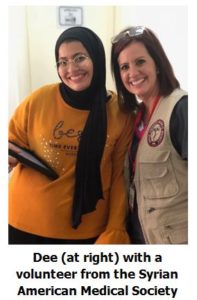 I’ve participated in previous Bridge of Life (BOL) missions, but the Jordan screening I attended in April 2018 evoked the most emotions for me. In partnership with the Syrian American Medical Society, our volunteer team of eight DaVita Kidney Care teammates screened over 1,000 displaced Syrian refugees for chronic diseases, including hypertension, diabetes and kidney disease. This mission was so different because of the population’s history of all they have been through and continue to endure.
I’ve participated in previous Bridge of Life (BOL) missions, but the Jordan screening I attended in April 2018 evoked the most emotions for me. In partnership with the Syrian American Medical Society, our volunteer team of eight DaVita Kidney Care teammates screened over 1,000 displaced Syrian refugees for chronic diseases, including hypertension, diabetes and kidney disease. This mission was so different because of the population’s history of all they have been through and continue to endure.
The people of Syria have suffered far more than I could EVER imagine in my lifetime. Their homes have been destroyed. They have lost loved ones. Some of their family is still back in Syria, and they have no hope of reuniting. They can’t go home when they have nothing to go back to, no resources to rebuild and when it’s not safe to return.
 But I could see the impact that our mission and our volunteers had on the men, women and children who came to our screening. Despite the safety they found in Jordan, the refugees struggle to make ends meet every day and to provide for their families. This mission provided them with basic healthcare services they no longer have access to. And it reminded them that they are still people in this world who care about their health and happiness.
But I could see the impact that our mission and our volunteers had on the men, women and children who came to our screening. Despite the safety they found in Jordan, the refugees struggle to make ends meet every day and to provide for their families. This mission provided them with basic healthcare services they no longer have access to. And it reminded them that they are still people in this world who care about their health and happiness.
During my time in Jordan, I saw smiling faces of men, women and children. I saw people making the best of their situation with grace. I remembered receiving hugs, kisses and numerous invitations to visit the refugees’ “homes” for dinner and to visit them if I ever came back. I remembered one man who called his American friend and let me talk to him just because we both are American and speak English. I recalled how I saw one man carrying his son with special needs over his shoulder just so he wouldn’t have to leave him alone while he and his wife attended the screening. I saw babies of all ages – a reminder of how these people would continue to thrive despite all they had 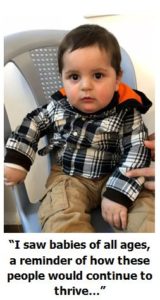 endured. Life has a way of going on!
endured. Life has a way of going on!
What we accomplished on this mission seemed so small compared to a need that is so great, but to the refugees, it meant so much. A smile, a hug, a laugh, a sticker for a child…showing them a little kindness and respect made more of an impact with them than anything else. And the opportunity for them to check on their health, meet with a physician and receive health education – it was such a simple act on our end but an incredible gesture for them. They are survivors!
My cup is so full right now that I can’t even describe how I truly feel. BOL has done wonderful things, but this is, in my opinion, the most important mission they have ever completed. I am so thankful that I got to be a part of it and would do this full-time if I could. I am grateful and proud to work with an organization that provides healthcare to those most in need around the world and can’t wait to go back. Just tell me when!
What I Learned from Educating Guatemalan Coffee Farmers on Kidney Disease Prevention
I signed up with Bridge of Life (BOL) as a volunteer because I felt the need to do something with extra meaning in my life. As a younger woman, I had the chance to travel South America and dabbled a bit in family planning and breastfeeding education, and, boy, did I feel an enormous sense of reward. So I was thrilled when I received a call for an interview from BOL and even more thrilled when I found out the mission would be to Guatemala.
I had visited Guatemala about 20 years ago, just as their civil war was ending. I was a tourist inspired by the love of beautiful textiles, the Incaparina case study in college (a study on nutrition) and my Guatemalan friends and patients in Los Angeles. They expressed their love of country with a mixture of pride and sadness for the conditions they fled back home. I had to experience Guatemala for myself. As I travelled from the most “touristy” places, such as Tikal, to some of the smallest towns in Huehuetenango, I kept telling myself I would come back some day but in a different capacity. I hoped to put a little grain of sand in the construction of a brighter future for those who struggle to create a better life for their families. I have been fortunate enough all of my life to have food, clean water, a home, access to healthcare, and more, so this opportunity was a reminder of how many people in this world still live in poverty and do what is needed to survive.
The experience on the coffee farm in Guatemala was very personally rewarding, a dream come true and then some. Our days on this chronic kidney disease screening mission started early, with station set-up at designated locations. Shortly after, the flow of patients started and didn’t stop until the last person was seen, usually in the late afternoon. I helped a for a short time at the registration desk but was then assigned to the preventative education station, where I would remain all three days having one of the best times of my life, despite how exhausted I was.
I felt that the participants were highly appreciative to learn their screening test results and information on how to better maintain their kidney health. And I trusted that most people who I saw would make at least some change in their lives and that of their families based on this education. Sometimes those small changes can make a great difference in the long run, and that belief fueled my energy to do justice to their needs.
As with most education, I also began to learn new things even as the teacher, but in this case the lessons were so very humbling. When I tried to educate on drinking more water, I learned that not all water is “equal.” There is “pure water,” and then there is gaseosa or “Coke water” – the preferred drink since most of the workers have limited access to good drinking water. And, if you are going to buy bottled water, you might as well get the sweet stuff and get some pleasure out of it (and for most, some much needed calories). When I tried to teach about integrating more vegetables into diets, I learned the names of the green, leafy vegetables that these individuals consume and that most people really enjoy them, but there is not enough water to grow them at home, and vegetables from the market often spoil within two days. When I tried to talk about the need for protein, I learned that most eat “vegan,” but only by necessity, not by choice. And I learned that one chicken can feed 10 people but is a luxury meal that’s reserved for once a week (maybe).
When I tried to educate participants about their lab results, I learned that many individuals had never even seen a doctor, and if they had, that lab tests and results were never explained to them (if they even received any tests at all). As I continued to provide preventative education, I learned that these individuals appreciated silly jokes by shyly laughing as I tried to make them feel more comfortable in a didactic environment that they were unfamiliar with. Getting a formal education is not much of an option in a society where people are put to work at a very early age to help their family survive.
But perhaps the greatest thing I learned is that, despite their struggles, the rich Mayan culture of these people shines through. With only a few handfuls of beans and some corn tortillas to sustain them, the women wrap themselves in their beautiful, colorful huipiles, the men prepare themselves for the day, and they all make the long, daily trek to the coffee farm motivated by the love of their children and families.
True Life: I Work on a Coffee Farm
It was halfway through the first day of Bridge of Life (BOL)’s chronic kidney disease (CKD) screening event at Bella Vista Farm in Antigua, Guatemala, when it dawned on me—“I thought I knew, but I had no idea.” Yes, it was an episode of MTV’s True Life. For those of you who aren’t familiar with it, True Life is a long-running television show which documents specific life experiences and the people living them. This week’s episode was titled, “True Life: I Work on a Coffee Farm.”
Uncertainty is a catalyst for speculation. This being my first shot at world health services, my expectations from a medical mission like this one weren’t specific. I had created wonderful stories in my head of how simple and scientific this trip was going to be. CKD is an epidemic in this region, and we were going to gather data and get to the bottom of it. And, on the way, we’d help educate and treat those in need. Sounds easy, doesn’t it? I mean, I like helping people. The idea of simple was eviscerated when I began taking vitals for the first of many coffee workers’ children.
I asked the first child, “Wait, you’re 15?” He replied, “Yes.” With a smile, I asked if he was just hanging out with his mother or father today. He replied, “No,” which led me to ask, “Do you work here?” The boy looked at me, smiled and said proudly, “Yes!” My next question was, “For how long?” “Three Years,” was his response. I was completely naïve to the idea that it was commonplace for people in this area to begin working on a farm at such a young age. At 15, I was attending high school, and the only labor I endured was taking out the trash, cleaning my room and washing dishes from time to time.
I also encountered a young man who asked me about my Star of Life tattoo on my right arm. The man asked if I was a firefighter, and I replied, “Yes, a volunteer.” The young man’s face lit up: I symbolized something to him, which filled him with pride. He, too, was a volunteer firefighter, but in Alotenango. And on this day, he connected with someone from a completely different world, but with the same passion. We shared photos of our fire trucks and squad members and a few stories. At first, I wasn’t sure what to make of this interaction, but I was still early on in the week’s journey.
As the days progressed, glimmers of our work’s progress were evident. The most luminous example for me occurred on the way back from the farm. I was in a car with three other volunteers, and we were reminiscing on a job well done for the week. Our driver received a call, and after hanging up, mentioned that a woman we screened earlier in the day made it to the hospital in Guatemala City. To be honest, I had been completely caught up in the collection of data and future interpretation – analyzing data is a habit of mine. But I had heard about a patient who, after all of our tests, showed strong evidence of Stage 5 kidney disease. The driver mentioned she would receive dialysis treatment and was impressed that, without this screening, she would have had no knowledge of her health which may have led to her passing. In the moment of silence that followed, I reached a level of certainty that erased all my speculation: this was the impact that our team had on the people here. It wasn’t just the data that we needed. It was the support we were giving the people here that was impactful. In that moment, who cared about the data? I didn’t—in fact, I said, “We saved someone’s life today.”
I reflect on a week that I’ll never forget. In fact, I’d like to expand on what our team did in Guatemala this week. I’d like to see how far our impact can truly reach. After all of the interactions I’ve had with the people and workers in Guatemala, I have a much more certain understanding of BOL’s goal: we gave these people life, and in return, they gave us life. The level of fulfillment from that realization is astonishing. I walked into this mission with one expectation and left with a completely different and humbling one.
Returning to the Dominican Republic to Serve
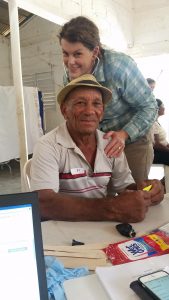 When I was 16 years old, I had an opportunity to go to the Dominican Republic (DR) on a dental mission. At the end of my 3 weeks there, I saw a group of people in the village that were sleeping and waiting in line for something. Out of curiosity, I asked what they were waiting for and they answered “doctors from America.” I thought it would be great to see how the doctors worked and asked, when they would be there so I could observe. I was shocked to find out 3 days later! At that moment, at age 16, I decided that I wanted to become a doctor who would come earlier to help the many people who had traveled and were sleeping outside for 3 days/nights. When I found out about this opportunity to go back to the DR with Bridge of Life (BOL), I had to return 30 years later!
When I was 16 years old, I had an opportunity to go to the Dominican Republic (DR) on a dental mission. At the end of my 3 weeks there, I saw a group of people in the village that were sleeping and waiting in line for something. Out of curiosity, I asked what they were waiting for and they answered “doctors from America.” I thought it would be great to see how the doctors worked and asked, when they would be there so I could observe. I was shocked to find out 3 days later! At that moment, at age 16, I decided that I wanted to become a doctor who would come earlier to help the many people who had traveled and were sleeping outside for 3 days/nights. When I found out about this opportunity to go back to the DR with Bridge of Life (BOL), I had to return 30 years later!
To start, this was an amazing experience – I worked long hours, in heat and at times difficult conditions, but loved every minute of it. I anticipated a similar experience as I had 30 years ago – and I was pleasantly surprised that the accommodations were very nice – with A/C, good food and the location was beautiful.
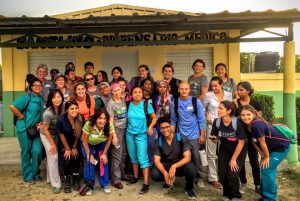 Each day we went to a batay (a small village) and would see 67-150 patients. Each morning we traveled 30-40 minutes to each batay and set up a triage area, lab, clinical area, and pharmacy. There was always a line formed before we arrived. We also had a dental team – which was a bonus! I worked directly with an interrupter, a scribe (a Wayne State or CSU student) and used a great Electronic Medical Records system (EMR) – called Timmycare, used by BOL’s in country partner Timmy Global Health. The EMR allowed me to review previous visits for each patient as well as previous treatments, etc. There is a full time doctor, Dr. Garcia and Anna (the coordinator) who helped with each and every aspect of the day. We had 3 volunteers to provide clinical care – myself, a Nurse Practitioner from a Philadelphia DaVita clinic and a DaVita Medical Group family practitioner from the LA area.
Each day we went to a batay (a small village) and would see 67-150 patients. Each morning we traveled 30-40 minutes to each batay and set up a triage area, lab, clinical area, and pharmacy. There was always a line formed before we arrived. We also had a dental team – which was a bonus! I worked directly with an interrupter, a scribe (a Wayne State or CSU student) and used a great Electronic Medical Records system (EMR) – called Timmycare, used by BOL’s in country partner Timmy Global Health. The EMR allowed me to review previous visits for each patient as well as previous treatments, etc. There is a full time doctor, Dr. Garcia and Anna (the coordinator) who helped with each and every aspect of the day. We had 3 volunteers to provide clinical care – myself, a Nurse Practitioner from a Philadelphia DaVita clinic and a DaVita Medical Group family practitioner from the LA area.
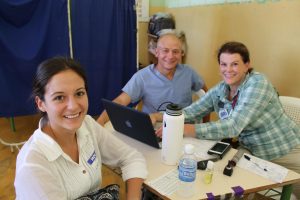 One thing that stood out for me was all the wonderful children that I saw – sadly many had infections, lice, as well as allergies. As I look back, I think one particular 38-year-old mother of 4 children stands out to me. I diagnosed her with new onset type 2 diabetes (her glucose was over 300). Normally in the U.S. I would discuss diet, food choices and start medications. I learned that there is very little availability for green vegetables in the DR. Most patients in the Dominican eat root vegetables potatoes, yucca, maybe carrots occasionally – none of these are ideal for diabetes patients. In spending time with this patient, I remembered that here in the U.S. it is a privilege to have availability of so many healthy vegetables.
One thing that stood out for me was all the wonderful children that I saw – sadly many had infections, lice, as well as allergies. As I look back, I think one particular 38-year-old mother of 4 children stands out to me. I diagnosed her with new onset type 2 diabetes (her glucose was over 300). Normally in the U.S. I would discuss diet, food choices and start medications. I learned that there is very little availability for green vegetables in the DR. Most patients in the Dominican eat root vegetables potatoes, yucca, maybe carrots occasionally – none of these are ideal for diabetes patients. In spending time with this patient, I remembered that here in the U.S. it is a privilege to have availability of so many healthy vegetables.
On this trip I was reminded from my trip 30 years ago that there continues to be a strong need in the DR for adequate medical care and of the amazing people that reside there. I was so grateful to share this special experience all my colleagues from the US (my fellow volunteers). And on this trip, I relearned why I went into medicine in the first place.
I would encourage all of my teammates who have an interest, to apply to volunteer. This is a wonderful opportunity to practice medicine where there is such a tremendous need and each person appreciates you being there. Each day, as we pulled away from the batay, I knew I made a difference – truly a full circle experience for me.
My Experience at The Painted Turtle, a Medical Camp for Kids
Wow, what an amazing gift it was to volunteer at The Painted Turtle. To an outsider, this camp looks like a normal summer camp with swimming, fishing, canoeing, horseback riding, arts and crafts, wood shop, improv, and archery. But when you look closer, you see the nurses visiting kids at meal time with medications, the IV catheter lines that have to get special waterproof dressings so the kids can swim and get wet, and the nighttime ritual of IV poles, TPN bags, oxygen machines and nurse checks every 2 hours. That’s when you know there is something very different, and very special, about this camp.
What impressed me most was the way these children took total responsibility for their medical care. For instance, we had some candy in the cabin that they boys were sharing. One particular boy took some candy and then asked me if I knew what dessert would be that day so he could decide if he would rather eat the candy now or save his sweet item for dessert. Another camper told me after our first lunch together that he needed to go to the Well Shell (the turtle-themed camp medical center) for his “special water.” It turns out that he needed an IV hung after lunch every day. This same boy also has a colostomy bag that he empties and replaces every day. Did I mention this boy is only 10 years old?
One of the high points of my volunteer time was at our closing circle after our final breakfast together. After every meal, there was always loud music, singing and dancing. We knew going in that Henry, one of the boys I also worked with, would not dance. And true to that, he pretty much sat and observed everyone else at every dance session. But at our final closing circle, we were all doing a particular camp dance with arm motions, and when I looked to my right, there was Henry, dancing away with everyone else. What a moment!
One very special event that will stay with me forever was with another boy, Michael. He had a liver transplant, but due to his medical condition, his lungs were failing. There is no long-term cure or treatment for his ailment. He was on oxygen 24/7 and had a backpack that infused him with medication to keep his lungs functioning. If he were to go more than 20 minutes without this medication, he would succumb to his illness. Well, he wanted to climb the ropes course and then zip-line down. First off, every one of my other campers successfully completed this very challenging rope climb. We wanted to find a way to allow Michael to complete it as well. We had our nurse, Jen, with us. Jen is a liver transplant nurse at the University of California Los Angeles and was one of the nurses who took care of Michael after his surgery, so she is very familiar with his care. We knew that Michael could go about 10 minutes without his oxygen tank, but the challenge was the need for a chest harness, and Michael’s backpack of medicine could not be removed or compromised. Jen called the Well Shell where Michael‘s transplant doctor was volunteering, and they decided that the harness can be put on under the backpack to allow Michael to complete this challenge. Jen and I stood back and watched Michael successfully complete the climb and zip-line down. Jen was brought to tears and shared with me that during Michael’s transplant and subsequent stay, his condition was touch-and-go. Michael is one of those special kids. I don’t know what it is, but after you spend time with him, you just know there is something different about him: the way he lights up a room, the way others respond to him, and the way he encourages and cheers everyone else on, whatever they are doing.
This was truly an amazing and beautiful experience. I would recommend it to anyone, as long as you are willing to put yourself out there, maybe look a little silly at times, and be open to whatever comes your way.
My Journey with the Bridge of Life Vietnam Medical Mission
Though short notice, when I read about an opportunity sponsored by DaVita Village Trust, in conjunction with the Project Vietnam Foundation (PVNF), I was very excited. Being of Vietnamese decent, I knew first hand of the medical need in this country. Though I’ve lived most of my life here in the United States and identify myself as American, deep down, I’m still Vietnamese. So when presented with the opportunity to give back in Vietnam, I took it. I was honored and fortunate to be chosen amongst hundreds of applicants. I thought, here is my opportunity to represent not only myself, but my teammate working extra hard to help out in my absence at Talbert Surgical Associates and DaVita.
I began this journey with only one expectation: that I would need to work hard. And, believe me, our team gave 110% everyday through some very tough conditions: hot weather, high humidity and polluted air; sketchy water; bugs; and rats. I didn’t know I had signed up for Survivor! But despite all the challenges and difficulties, this was absolutely the most fulfilling experience of my life. There was a sea of endless smiling faces waiting patiently in the sweltering sun for hours. This was their opportunity to see the “American Medical Team” that had traveled all this way to help them. We did what we could with the limited resources that each team member had packed along with their personal luggage for this mission. Our services may have been minor by our standards, but to the people that we served, it meant the world.
On our last day, our team was approached by one of the leaders from PVNF. They asked if anyone knew their blood type. So I stepped forward and told them that I was a universal donor, O-. They pulled me aside and asked if I would consider donating blood for a very sick child. Anemia and malnutrition are facts of life for most children in this part of the world. But this child was barely hanging on. It wasn’t a question of yes or no to me at this point, but, rather, when can we get this done. For me, it was the sooner, the better. A formal request to help this child was made to the medical director of the facility where we were working. After what seemed like a lifetime of waiting, I was finally able to donate blood a couple of hours later.
Before we left, I was compelled to seek out this child and her parents to wish them well. Through tearful eyes, the child’s parents greeted me and Brooke, a DaVita Physician Assistant who examined the child from our delegation. Obviously, there wasn’t a dry eye in the room! During our short conversation, the mother told us that her child needed urgent surgery. But they are still short on money, even after selling their home for funds. So it was PVNF to the rescue! They donated more than enough funding to cover the surgery and then some.
This experience, along with the entire mission, has left me with a profound sense of gratitude. My daily challenges now pale in comparison to what I know many people in the world go through daily just to survive another day. So I’m grateful to DaVita Village Trust and PVNF for the opportunity to give back and to “give life.” Sign me up for the next mission! When and where are we going???
